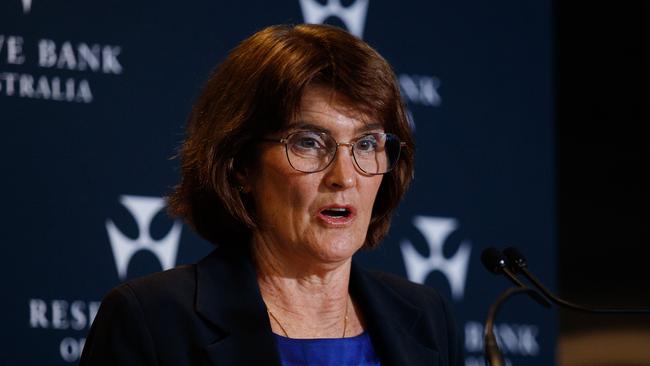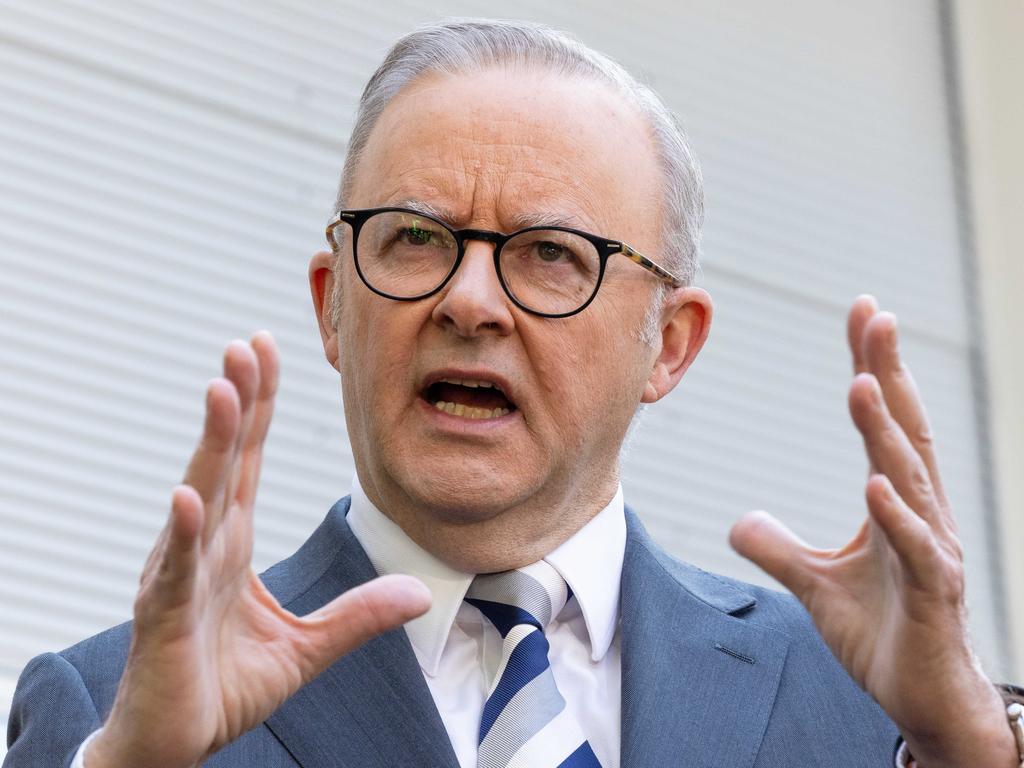Election 2025: Rates response by RBA is cut, cut and more cuts
The Reserve Bank is almost certain to cut interest rates next month and follow up with as many as three further reductions this year, traders say.

The Reserve Bank is almost certain to cut interest rates next month and follow up with as many as three further reductions this year, traders say, as the central bank warns Donald Trump’s tariffs could have a “chilling” effect on business investment and economic growth.
After the US President announced a series of sweeping border taxes targeting America’s trading partners, including a 10 per cent duty on Australia, bond traders bolstered their rate cut bets as equity markets tumbled. The S&P/ASX 200 had slipped 0.9 at the close, while US market futures were pointing to a broad sell-off on Wall Street, with the benchmark S&P 500 index expected to drop 3.5 per cent.
Money markets ascribe a 93 per cent chance of a quarter-percentage-point cut at the RBA’s next meeting, scheduled for May 19-20, up from almost 70 per cent prior to Mr Trump’s “Liberation Day” tariff announcement.
Bond traders are tipping as many as three follow-up cuts by the end of the year, which would take the official cash rate to 3.1 per cent. Before Mr Trump’s Rose Garden press conference, traders were expecting no more than two cuts.
The shift in market expectations comes as the central bank on Thursday warned that Mr Trump’s tariffs could sharply reduce business investment. “Ongoing uncertainty surrounding the imposition of tariffs and other trade restrictions between the United States and other major economies could have a chilling effect on business investment and household spending decisions, and pose substantial headwinds to the outlook for global economic activity,” its biannual financial stability review said.
It also warned of “a sharp repricing of risk” from the current low levels, which could lead to an abrupt increase in borrowing costs for business.
“This could be triggered by geopolitical tensions, such as the imposition or threat of tariffs by the United States and its trading partners,” it said.
Citi chief economist Josh Williamson said the direct hit to Australian economic growth from Mr Trump’s latest round of tariffs would be negligible, but he expected the RBA would move to cut rates next month.
“The impact of the 10 per cent reciprocal tariffs from the US on Australia is unlikely to derail the cyclical recovery this year. Thus we keep our growth forecasts unchanged,” he said. “That said, growing uncertainty around global trade and business investment could shunt confidence.”
Oxford Economics’ Sean Langcake was one economist who, after the tariff announcement, adjusted his thinking about the RBA’s next rate move.
He hadn’t had another quarter-percentage-point rate cut priced in until the December quarter, but said he was “now contemplating bringing that cut forward to the September quarter”.
“Yes, it looks like the global economy will be weaker, but Australia will be in a good place. Australian commodity volumes will stay steady even with weaker commodity prices,” he said.
“But where the effects will come through is in the uncertainty that could affect private investment, especially if there is disruption to supply chains.”
Deutsche Bank’s Phil O’Donaghoe did not change his view on interest rates, saying he stood by his long-standing view that as 2025 becomes increasingly defined by global trade war concerns, Australia will “fly under the radar”.
“We estimate that the total value of all Australian goods exports to the United States in a year is worth about 68 days of Australian iron ore exports to China,” he said. “Australia is exposed via second-round effects to the impact on the global economy, especially Asia, but the direct implications are limited.”






To join the conversation, please log in. Don't have an account? Register
Join the conversation, you are commenting as Logout